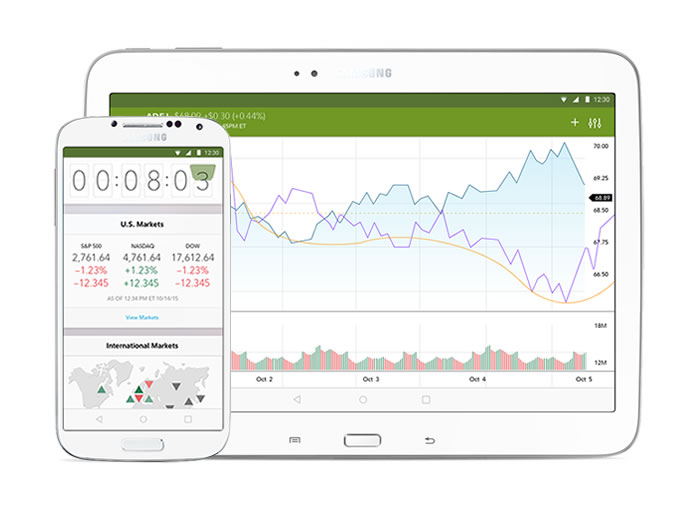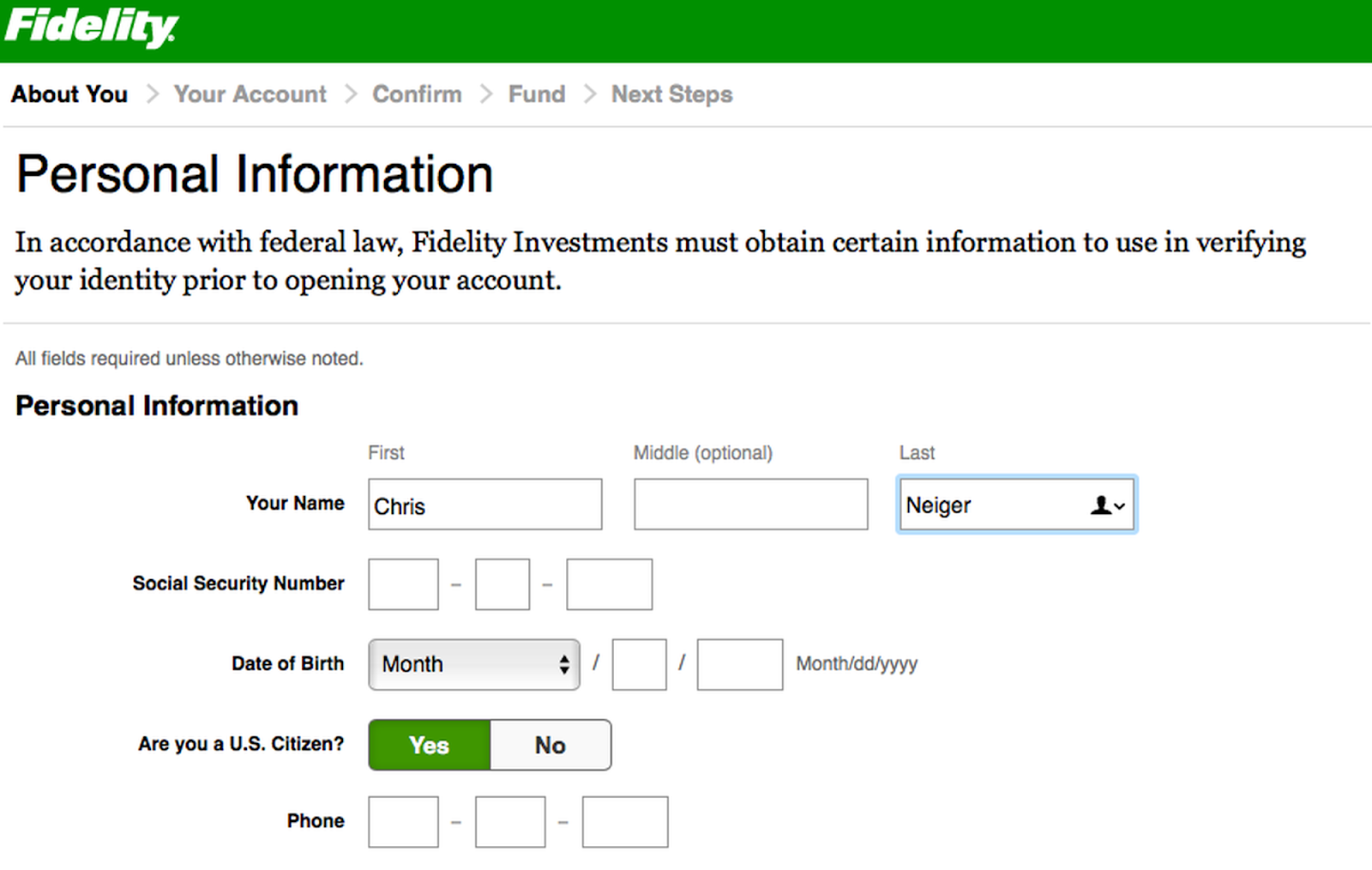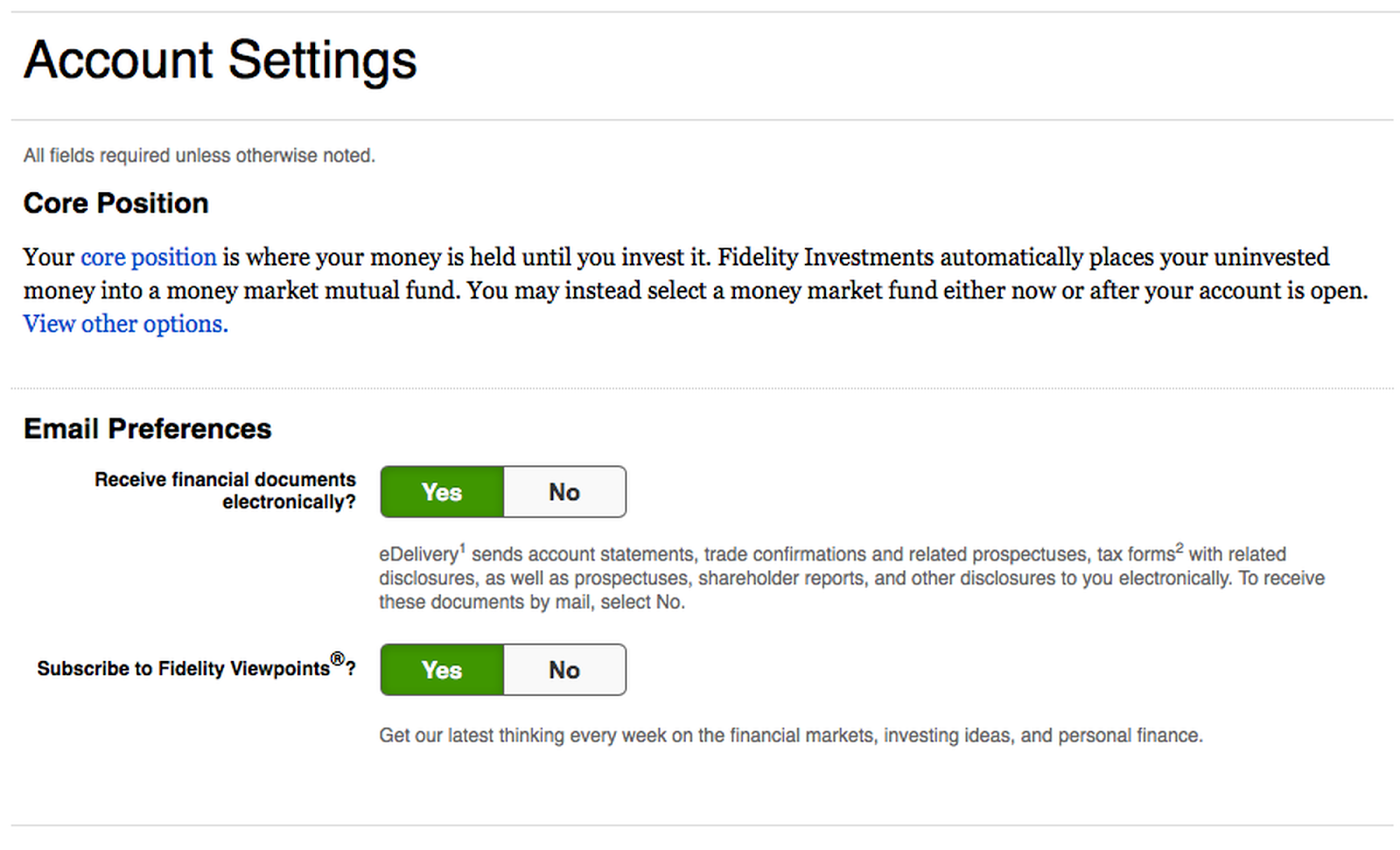Fidelity Investments is known for its mutual funds, but its brokerage arm is no slouch: It provides zero trading charges, a wide range of research, and an easy-to-use interface that can easily be modified for more sophisticated traders. The money’s reputation isn’t bad, either: With a broad variety of no-transaction-fee funds, including its Fidelity Zero index funds, which have no cost ratio and no minimum investment requirement, the broker received five stars from us in every fund category. Customers benefit greatly from these investor-friendly procedures.
Fidelity was already a market leader in terms of low-cost charges, but it abolished costs for stock, ETFs, and options in 2019. Previously, the business eliminated almost all account fees, including the typical transfer and account closure fees levied by brokers.

What is Fidelity and What Does it Do?
Fidelity Investments Inc. or Fidelity, is an American global financial services business located in Boston, Massachusetts. It was previously known as Fidelity Management & Research or FMR. The firm was founded in 1946 and is now one of the world’s largest asset managers, with $4.9 trillion in assets under management and a total client asset value of $8.3 trillion as of June 2020.
Fidelity Investments is a brokerage business that offers fund distribution and financial advice and retirement services, index funds, wealth management, cryptocurrencies, securities execution and clearing, asset custody, and life insurance. Fidelity Investments continues to grow as a key player in the online brokerage industry. In both our 2019 and 2020 Best Online Brokers Awards, Fidelity’s brokerage service won the top position overall, as the company has continued to improve important aspects of its platform while simultaneously committed to decreasing the cost of investing for clients.
In October 2019, Fidelity joined the rush to eliminate equity and base options charges, but it remains committed to providing its clients with high-quality research and education. Clients may also earn income by moving uninvested funds into a money market fund, which the business facilitates.
To help you decide whether Fidelity is the perfect match for your investment style, you should look at how it rates in a more competitive 2020 online brokerage sector in terms of features, prices, and resource quality. We’ve examined the Fidelity Go Robo-advisor service in addition to this Fidelity Investments broker evaluation.
Fidelity Review – Feature Overview
Overall, Fidelity is a very user-friendly program. By basically dividing its service into two platforms, the company has solved the problem of having tools for traders while also providing a straightforward experience for basic investors. Fidelity’s account setup process is straightforward, especially if you’re joining an existing household. However, adding on account services like options trading or margin necessitates filling out a separate application, and none of the information from your profile is copied, so you’ll have to do it all over again.
Fidelity’s downloaded trading interface, Active Trader Pro, provides traders and more active investors with additional features that are accessible online. All charting and trading capabilities are available right now with Active Trader Pro.
It’s adaptable, so you may customize your workspace to meet your specific requirements. The program can monitor important news streams, offer notifications on open positions, and notify you of highs, lows, and other technical indications inequities you’re watching.
The mobile solution is robust, with almost as many features as the desktop version and complete flexibility to handle the majority of investor and trading activity. You may customize your login page and the buttons at the bottom of the device for your most-used services, as well as how your news is displayed. The scope of fundamental analysis is restricted, and charting is time-consuming.
When compared to other brokers’ mobile apps, the charting is still above average, with only a few indicators and no sketching capabilities. Watchlists on mobile are shared with desktop and online apps, and the watchlist is prominently shown in the app’s navigation. Except for conditional orders, most order types available on the web or desktop are also available on the mobile app.
Wealth-Lab Pro, a premium tool offered to investors in households that place 36 or more stock, bond, or choices transactions in a rolling 12-month period and have at least $25,000 in assets throughout their qualifying Fidelity brokerage account, allows backtesting of trading techniques. Customers that pass for automated trading in Wealth-Lab Pro can perform their strategy trading.
What Fidelity Has to Offer
As one of the country’s largest brokers, Fidelity is geared to cater to the great majority of individual investors. Fidelity’s fully-rounded platform offers a wide range of tools, information, and resources, as well as simple order input, for the ordinary buy-and-hold investor. As one of the country’s largest brokers, Fidelity is well-positioned to serve the vast majority of individual investors. For the average buy-and-hold investor, Fidelity’s comprehensive platform provides a wide range of tools, information, and resources, as well as easy order entry.
Also, the company’s bond screener allows fixed-income investors to narrow down the roughly 120,000 secondary market offers accessible by a range of criteria and create a bond ladder. Based on real-time data, the yield table is updated every 15 minutes. Although this scanner is versatile, the layout is unappealing.
Fidelity also offers a variety of tools and calculators to help you with everything from budgeting to evaluating your investing plan. The Tools and Calculators page displays them all at once and allows you to choose from a list of around 40. A highly helpful hypothetical trade tool is included in the tools, which illustrates the impact of a future buy or sale on your portfolio.
Trading Technology
The way a broker routes your order impacts whether you’ll get the best price available at the moment you place your deal. This is referred to as “price improvement.” A sale above the bid price or purchase below the offer price is both examples of price improvement. Fidelity Dynamic Liquidity Management, Fidelity’s trade execution engine, looks for the best available price and provides clients a high rate of price change.
According to Fidelity, clients who execute a 1,000-share marketable order may expect to save $16.66 on average compared to the order entry quotation. Furthermore, your orders are not routed to generate payment to maintain order flow. For choices, Fidelity uses third-party smart order routing technology. Option price increases, on the other hand, are far below the industry average.
According to Fidelity, clients who execute a 1,000-share marketable order can save an average of $16.66 compared to the order entry price. Furthermore, to preserve order flow, your orders are not routed to generate payment. Fidelity relies on third-party smart order routing technologies to provide options. On the other hand, option price hikes are well below the industry average.
The Biggest Advantage of Fidelity
There are some major advantages that the company is taking over other companies that are involved in the market.
- Excellent trade executions: Fidelity has fine-tuned its trade execution algorithms over the previous five years to focus on price improvement while avoiding paying for order flow. Over 96 percent of Fidelity clients’ orders are filled at a lower price than the national best bid or offer. Every order confirmation report shows the cost reductions.
- Customers can narrow down their investment options with extensive research and asset screeners. There are a variety of pre-set screens for stocks, ETFs, options, and fixed income that customers may customize to their liking. There are over 140 criteria in the stock screener, as well as 21 topics including Robotics, Natural Foods, and Cloud Computing. Analyst ratings, themes, and the option to search through funds by a single stock are all available in ETF research.
- Uninvested funds are automatically deposited in a money market fund, which is subsequently withdrawn and made accessible for trading as needed. The majority of other brokers require customers to physically transfer money into a money market fund.
- The news stream is flexible and customized, and it may be sorted by watchlist or holdings, with real-time changes. Global sources as well as premium U.S.-based feeds are included in the news feeds.
The Biggest Disadvantage of Fidelity
Does not matter how successful or advantageous one company might be, especially in the financial market, the flaws are always in their place. Customers may be required to use several platforms in order to access their favorite tools. On Active Trader Pro, there are a lot of options-specific tools, but fundamental analysis for stocks is generally only available on the website. Customers may be compelled to access their preferred tools across several platforms. There are several options-specific features on Active Trader Pro, but fundamental analysis for equities is typically only available on the website. When consumers start trading futures and options on futures, they may outgrow Fidelity’s products.
Is Fidelity Safe?
The security at Fidelity is up to industry standards:
- Biometric, facial as well as fingerprint recognition can be used to log in to the mobile app.
- When customers log in using an unfamiliar browser, security questions are asked.
- Two-factor authentication is required for higher-risk transactions, such as wire transfers.
- Fidelity has excess Securities Investor Protection Corporation (SIPC) insurance, which covers uninvested capital up to $1.9 million. This is the highest excess SIPC protection presently offered in the brokerage sector, according to Fidelity.
- The Identity Theft Research Center found no serious data breaches at any Fidelity location until November 2019.
Does Fidelity Have Fees?
Fidelity’s rates are comparable to those of the majority of industry participants, having joined the race to zero fees in October of this year.
For online stock, ETF, and OTCBB trading, Fidelity does not charge fees. Options transactions have no per-leg commission. Commissions are $0.65 per deal. A 50-options-contract order costs $32.50. The cost of a covered call deal of 500 shares plus 5 contracts is $3.25. Outside of the No Transaction Fee program, mutual fund commissions are $49.95.
As of January 2020, margin interest rates vary from 9.325 percent for balances under $10,000 to 7.825 percent for balances exceeding $100,000. Inactivity, account closure or transfer, exercise/assignment, sending and receiving wires, sending cheques, and printed statements, and trade confirmations are all free of charge.
Most orders are subject to exchange costs, which are generally fractions of a cent per share or contract and are passed on to clients by Fidelity. The charge for using a live broker is $32.95 per trade. Depending on the market, international transactions carry a broad variety of costs, so review those commissions carefully before placing an order.
Creating a Fidelity Account – Step by Step

- Fill up your personal details – To begin, go here and select “Open online” next to “Brokerage Account – The Fidelity Account,” the first choice. After selecting an individual account and clicking “Next,” you’ll be asked if you’re already a Fidelity client. If you don’t already have a Fidelity account, you’ll need to provide some basic personal information, such as your email address, street address, and Social Security number.
- Configure your account settings – You’ll answer a few simple questions about your account on this page. It’s worth mentioning that Fidelity’s account settings are among the easiest and most straightforward to set up. Other brokerage accounts aren’t necessarily difficult to set up, but Fidelity’s is one of the easiest.
- Examine and confirm – You’re nearly finished. You’ll only go through your personal information, the account you choose, your work information, and basic account settings in this part.
You’ll also go through technical details like the customer agreement, terms and conditions, and electronic delivery agreement, among other things. After reading and reviewing these documents, press the “yes” button at the bottom.
- Start investing when you’ve funded the account – You’ve successfully opened the account! You may fund your account using your bank account details or through another brokerage account from here.
Apart from that, you’ve completed the setup of your Fidelity brokerage account.

Fidelity Investments Review
Final Remarks
Fidelity provides exceptional value to investors of all levels of experience. Those who want to do their own study will be pleased with the materials available. Buy-and-hold investors and regular equities traders are particularly well served, demonstrating Fidelity’s size and breadth as an online broker.
As a result, you might have to spend some time searching for the tool or feature you need to make a certain investment choice – it’s there, but you’ll have to look for it. However, having such a large feature set comes at a cost, and the separation of Active Trader Pro from the main platform helps to reduce potential clutter. Fidelity’s execution quality is excellent at most transaction sizes once you’re set up and trading and their concentration on producing interest on your idle capital are laudable.
However, derivatives traders, particularly those who trade futures and futures options, are one of the few types of investors who will not be able to invest with Fidelity. Options traders have tools, but rival platforms do a better job of assisting them in locating trading opportunities.
There are still some uncomfortable transitions between some functions, such as screeners, and the trading experience in a few places. With its extensive feature set and commitment to making and saving you money, Fidelity makes a solid argument for being the online brokerage of choice for the ordinary investor.
Things People Ask About Fidelity
Is Fidelity good for beginners?
For novices, Fidelity is a decent investing broker. They are a well-known and respected broker that is primarily known for its mutual funds, but their trading platform is quickly gaining traction. Fidelity also offers excellent research tools and customer service.
It is completely free to start a Fidelity account. However, if you wish to trade on margin, you’ll need a $5000 deposit. Fidelity does not force you to maintain a minimum account balance or charge you yearly fees once this level has been attained. To understand more, see our other Fidelity reviews. Please keep in mind that these brokers’ fees are always changing, so check Fidelity for the most up-to-date information.
Does Fidelity have hidden fees?
There is a $49.95 transaction charge if a mutual fund is purchased through Fidelity that is not on the broker’s NTF list. For mutual fund transactions, Ally Invest costs only $9.95, while Firstrade charges nothing.
Most managers are concerned that using Fidelity’s debit card at an ATM is free, and that Fidelity even reimburses any costs imposed by the cash machine. They may not understand, however, that this generous policy applies solely to the broker’s Cash Management Account. The company’s normal brokerage account, known as the Fidelity Account, has distinct policies.
The company doesn’t charge anything for the first five ATM withdrawals in a month, but after that, it charges $1 for each transaction and doesn’t reimburse ATM costs. Obviously, this approach is far less generous. However, it is possible to avoid it by trading at least 120 bonds, options, or stocks, or by attaining Premium or Private Client Group membership.
Does fidelity give you buying power?
An account balance reflects buying power. In general, your purchasing power refers to the amount of money you have available to acquire assets at any one moment. This amount is calculated by adding the total cash in your account to the loan value of your marginal securities. Keep in mind that your purchasing power fluctuates when security values vary.
If you’re trading using your intraday buying power balance, you should anticipate liquidating positions before the end of the trading session in which you opened them. When you use the intraday purchasing power balance to initiate a trade and hold it overnight, you’re more likely to get a margin call that’s due right away.